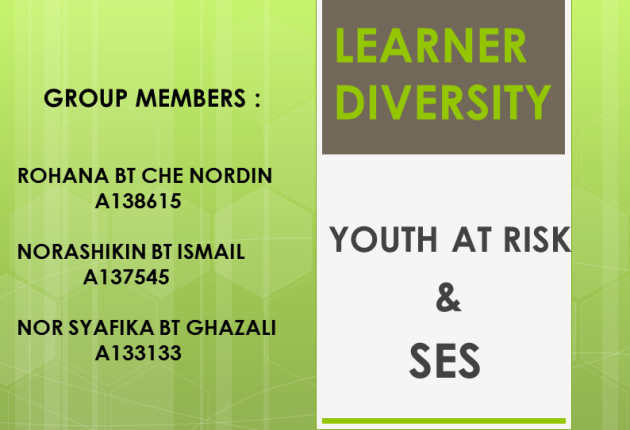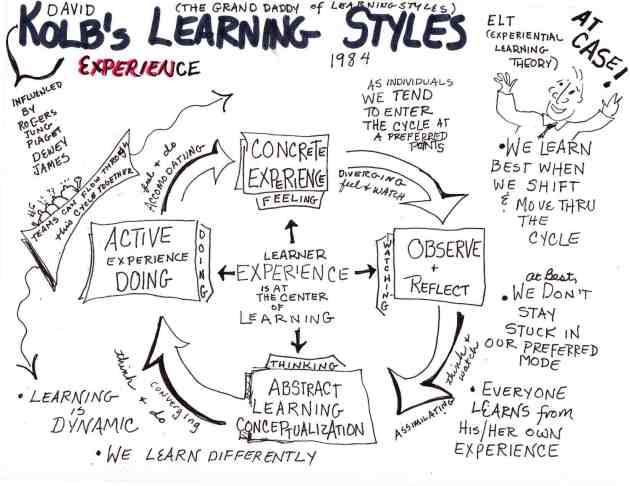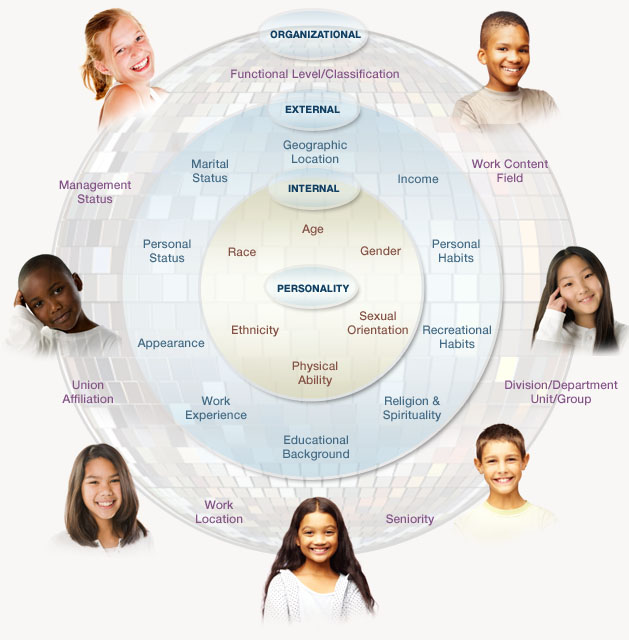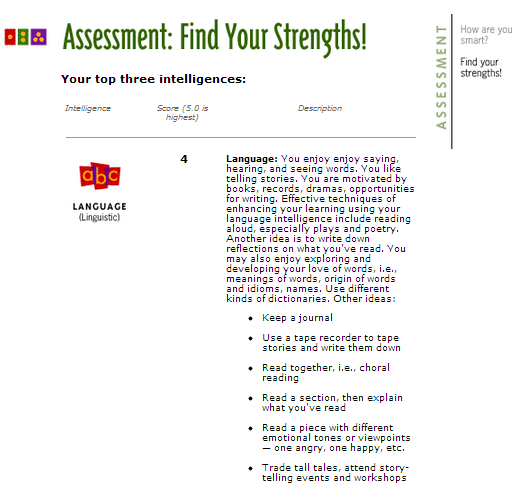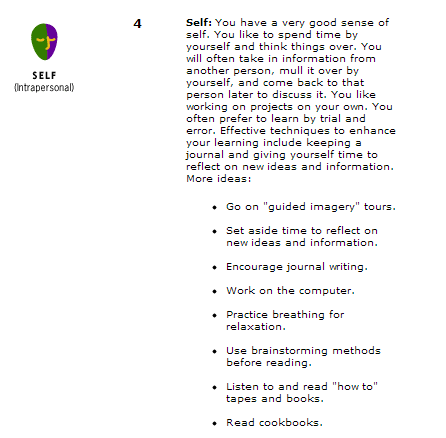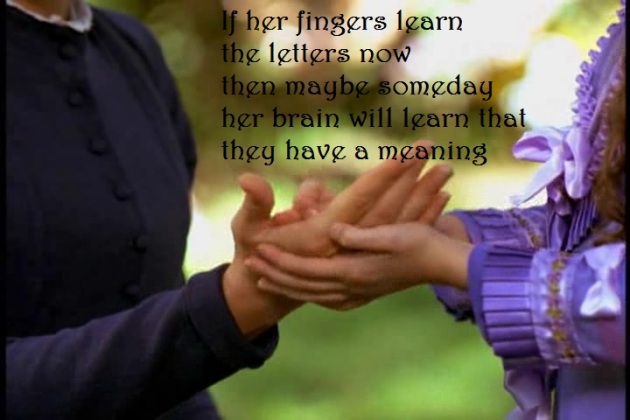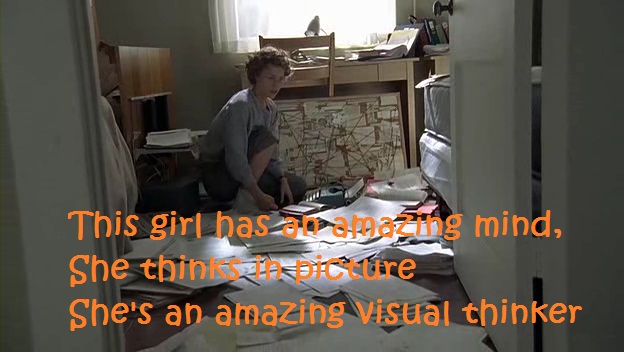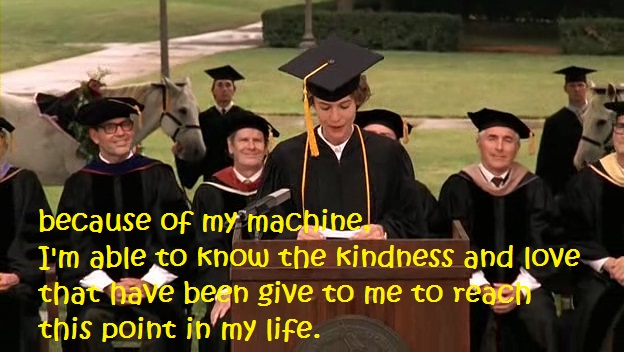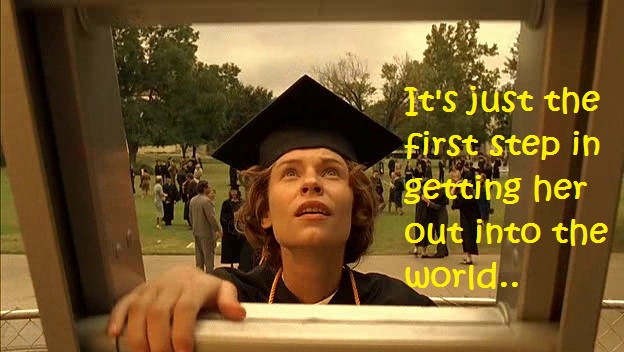Tutorial – SAALE MODEL, Autism & Down Syndrome
Assalamualaikum w.b.t
Here the review of presentations from my classmates,
SAALE MODEL by Adira
AUTISM by Nadia
DOWN SYNDROME by Yasmin
SAALE MODEL
SAALE MODEL stands for :
S = SYSTEMATIC
A = APPROACH
A = ADAPTING
L = LEARNING
E = ENVIRONMENT
SAALE MODEL first being applied during 1970′s and it aimed to allowed disabled children to get the same curriculum as the normal children. It is a universal design of teaching and learning model.
SAALE MODEL has 3 main components or types of adaptation, they are :
- Environment
- Instructional environment (planning & teaching)
- Evaluation
Adaptation of environment has 3 components
- socio- emotional environment
- physical environment
- behavioral environment
Adaptation of instructional environment consists of lesson plan, techniques etc.
Adaptation of evaluation is how students being evaluate and graded.
AUTISM
Autism is a disorder of neural development characterized by impaired social interaction and verbal and non-verbal communication and by restricted, repetitive or stereotyped behavior.
The diagnostic criteria require that symptoms become apparent before a child is three years old.
3 recognized disorders :
- autism spectrum (ASDs)
- Asperger syndrome, which lacks delays in cognitive development and language
- pervasive developmental disorder, not otherwise specified (commonly abbreviated as PDD-NOS), which is diagnosed when the full set of criteria for autism or Asperger syndrome are not met.
Here are the signs of AUTISM :
DOWN SYNDROME
Down syndrome (DS) or Down’s syndrome, also known as trisomy 21, is a genetic disorder caused by the presence of all or part of a third copy of chromosome 21.
Down syndrome is the most common chromosome abnormality in humans.
It is typically associated with a delay in cognitive ability (mental retardation or MR) and physical growth, and a particular set of facial characteristics.
Down syndrome is named after John Langdon Down, the British physician who described the syndrome in 1866.
Characteristic Features and Symptoms of Down Syndrome
Although the severity of Down syndrome ranges from mild to severe, most individuals with Down syndrome have widely recognizable physical characteristics. These include:
- a flattened face and nose, a short neck, a small mouth sometimes with a large, protruding tongue, small ears, upward slanting eyes that may have small skin folds at the inner corner (epicanthal fold)
- white spots (also known as Brushfield spots) may be present on the colored part of the eye (iris)
- the hands are short and broad with short fingers, and with a single crease in the palm
- poor muscle tone and loose ligaments are also common
- development and growth is usually delayed and often average height and developmental milestones are not reached.
Down syndrome children..
Diversity Kit Project
Group members :
ROHANA BT CHE NORDIN
A138615
NORASHIKIN BT ISMAIL
A137545
NOR SYAFIKA BT GHAZALI
A133133
The Diversity Kit Project for our group is about
YOUTH-AT-RISK, PREVIOUS EDUCATIONAL EXPERIENCES
& SOCIO-ECONOMIC STATUS (SES)
here is our powerpoint slideshows..
POSTER
and here the link for our video :
http://www.mediafire.com/download/xl388z9fxmn17xz/Youth+at+risk+-+KIT.rar
Global and Analytical Learners
On 25th April, me and Zarina have our presentation based on the questions given, Global and Analytical Learners, Their Characteristics and How Teachers Strategize to Accommodate Them.
Here are some points we put to our slides…
- Learning Style explains how the individual interacts with new information.
- The GLOBAL learning style and the ANALYTICAL learning style.
- No person is bound by one learning style.
- Even though individuals find themselves in both categories, they gravitate toward just one learning style.
The Global Leaning Style
- Linked to right-hemisphere dominance in the brain
- Takes in information holistically
- Begins with understanding concepts first, with mastery of details to follow
- Prefer music or other background noise.
- may work better in groups than alone
- prefer to work on multiple tasks at once
- sees the big picture or overall view
- likely to respond to a problem with emotion first, instead of logic.
The Analytical Learning Style
- Grounded in left-hemisphere dominance in the brain
- Take in information sequentially, step-by-step
- Preferring to learn a series of facts that lead toward an understanding of a larger concept
- Requires orderly, quiet surroundings
-
preferring to study alone for long periods without interruption
-
tend to work on one task to completion
-
focuses on the parts that make up the big picture
-
likely to respond to a problem with logic first, instead of emotion, solve problem systematically and logically.
Strategies teachers can use to accommodate them
- Understanding the key differences in student learning styles leads to better learning support.
- Numerous assessment tests allow individuals to determine their own learning styles and help parents and teachers find ways to encourage learning.
- Teachers can develop lesson plans that accommodate both styles, such as incorporating narratives and group work into lesson plans to accommodate global learners.
Analytical Learner
- Provide traditional classroom setting.
- Shows and organize the sequences of information.
- Leads to larger concept of understanding.
- Provide activity that follows sequence, process, list, timeline, and charts.
- Example: bring back pieces or parts of body altogether and explain their functions.
Global Learner
Learning Styles
Assalamualaikum w.b.t..
On Tuesday morning, 4th April, we have lecture about Learning Style.
- Learning style is an individual’s natural or habitual pattern of acquiring and processing information in learning process.
- individuals differ in how they learn.
- The idea of individualized learning styles originated in the 1970s, and has greatly influenced education.
Learning styles in education recommend that teachers assess the learning styles of their students and adapt their classroom methods to best fit each student’s learning style because there are differences in individual thinking and ways of processing various types of information as well as how they learn.
KOLB LEARNING STYLE
David A. Kolb create learning styles model based on the Experiential Learning Theory, as explained in his book Experiential Learning: Experience as the source of learning and development (1984).
The model outlines two related approaches toward grasping experience:
Concrete Experience and Abstract Conceptualization,as well as two related approaches toward transforming experience: Reflective Observation and Active Experimentation.
According to Kolb’s model, the ideal learning process engages all four of these modes in response to situational demands. In order for learning to be effective, all four of these approaches must be incorporated. As individuals attempt to use all four approaches, however, they tend to develop strengths in one experience-grasping approach and one experience-transforming approach. The resulting learning styles are combinations of the individual’s preferred approaches. These learning styles are as follows:
- Converger
- Diverger
- Assimilator
- Accommodator
Convergers are characterized by abstract conceptualization and active experimentation. They are good at making practical applications of ideas and using deductive reasoning to solve problems.
Divergers tend toward concrete experience and reflective observation. They are imaginative and are good at coming up with ideas and seeing things from different perspectives.
Assimilators are characterized by abstract conceptualization and reflective observation. They are capable of creating theoretical models by means of inductive reasoning.
Accommodators use concrete experience and active experimentation. They are good at actively engaging with the world and actually doing things instead of merely reading about and studying them.
Dimensions of Diversity
Assalamualaikum w.b.t..
On 19th March, the lecture for Learner Diversity class was about Dimensions of Diversity. From the lecture, I got to know about the dimensions of diversity that resemble the diverse world in which we live is a composite of many cultures, values and ways of interacting with one another. The dimensions of diversity including gender, religious beliefs, race, martial status, ethnicity, parental status, age, education, physical and mental ability, income, sexual orientation, occupation, language, geographic location, and many more components. The most important is, by understanding the dimensions of diversity, we can relate the world cultures which will help ensure the development of instructional competencies that will connect with groups and individuals interacted with.
DIVERSITY means differences.
Human Diversity means differences among people, it’s all of us in our rich and infinite variety.
Some components of Dimensions of Diversity :
- Culture
- Language (mother tongue, bilingual)
- Gender ( girls vs boys)
- Ability difference ( smart learner, slow learner, gifted learner)
- Exceptionalities ( autistic, down syndrome)
Here are about dimensions of diversity and its components…
http://pubs.cas.psu.edu/freepubs/pdfs/ui362.pdf
By the understanding of dimensions of diversity, we can have some perspectives of how students think, lifestyle that could effect or influence how they learn. This guide us to implement the strategy of learning which suited the students depend on the dimensions of diversity.
Multiple Intelligence
During Thursday’s tutorial, Ummi gives us chance to do the multiple intelligence test .The multiple intelligence test or quiz is about how to discover the area of the intellingence which you are strongest based on theory of multiple intelligences by Howard Gardner.
From learning more about the multiple intelligences, it can help us to be better understand of our own strengths.
About Multiple Intelligence…
- Howard Gardner of Harvard has identified seven distinct intelligences.
- This theory has emerged from recent cognitive research of the extent to which students possess different kinds of minds and therefore learn, remember, perform, and understand in different ways.
The learning styles by Howard Gardner are :
Interpersonal – understanding, interacting with others. These students learn through interaction. They have many friends, empathy for others, street smarts. They can be taught through group activities, seminars, dialogues. Tools include the telephone, audio conferencing, time and attention from the instructor, video conferencing, writing, computer conferencing, E-mail.
Intrapersonal – understanding one’s own interests, goals. These learners tend to shy away from others. They’re in tune with their inner feelings; they have wisdom, intuition and motivation, as well as a strong will, confidence and opinions. They can be taught through independent study and introspection. Tools include books, creative materials, diaries, privacy and time. They are the most independent of the learners.
Visual-Spatial – think in terms of physical space, as do architects and sailors. Very aware of their environments. They like to draw, do jigsaw puzzles, read maps, daydream. They can be taught through drawings, verbal and physical imagery. Tools include models, graphics, charts, photographs, drawings, 3-D modeling, video, videoconferencing, television, multimedia, texts with pictures/charts/graphs.
Bodily-kinesthetic – use the body effectively, like a dancer or a surgeon. Keen sense of body awareness. They like movement, making things, touching. They communicate well through body language and be taught through physical activity, hands-on learning, acting out, role playing. Tools include equipment and real objects.
Musical – show sensitivity to rhythm and sound. They love music, but they are also sensitive to sounds in their environments. They may study better with music in the background. They can be taught by turning lessons into lyrics, speaking rhythmically, tapping out time. Tools include musical instruments, music, radio, stereo, CD-ROM, multimedia.
Linguistic – using words effectively. These learners have highly developed auditory skills and often think in words. They like reading, playing word games, making up poetry or stories. They can be taught by encouraging them to say and see words, read books together. Tools include computers, games, multimedia, books, tape recorders, and lecture.
Logical -Mathematical – reasoning, calculating. Think conceptually, abstractly and are able to see and explore patterns and relationships. They like to experiment, solve puzzles, ask cosmic questions. They can be taught through logic games, investigations, mysteries. They need to learn and form concepts before they can deal with details.
Then, I also try to do the multiple intelligence assessment from the internet,
here the link :
http://www.literacyworks.org/mi/assessment/findyourstrengths.html
This is my result of the assessment.. 🙂
As the summary, this is a graphic picture which representing the eight multiple intelligences :
The Miracle Worker Movie
The Miracle Worker is a true story of Helen Keller who is blind and deaf from an illness when she was 19 months old. She has no knowledge or understanding and just grabs whatever she wants and breaks whatever she doesn’t want. Her parents hire Anne Sullivan, once blind herself, to be her teacher. Sullivan begins by teaching Helen basics, then how to use her hands to spell out the names things. Helen learns to imitate the finger-motions, but does not connect them to anything. She must first understand the concept of language. Sullivan tries various approaches, and after one chaotic meal, Sullivan grabs Helen and forces her to the pump, to fill the pitcher of water she knocked over. As Helen feels the water rush over to one of her hand, Sullivan finger-spells “water” into the other. Suddenly, Helen understands. A word she heard as comes back to her, and she knows that “w-a-t-e-r” spells water. She runs all over, asking for the names of everything. It’s clear that Sullivan has opened the world to her. Patience and enthusiasm are the important keys for Anne Sullivan in teaching language for Helen Keller which then lead the successful future of Helen Keller..
Temple Grandin Movie
TEMPLE GRANDIN
Temple Grandin is a true story of an autistic woman who has become one of the top scientist in revolutionized practices for the humane handling of livestock on cattle ranches and slaughterhouses.
In a journey to her successful life, she meets a supportive teacher, Dr. Carlock, who encourages her to go further into science as a career and to eventually attend college. Her teacher believes her ability and guides her to reach her dreams.. That’s the true quality of being a teacher… 🙂










